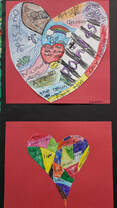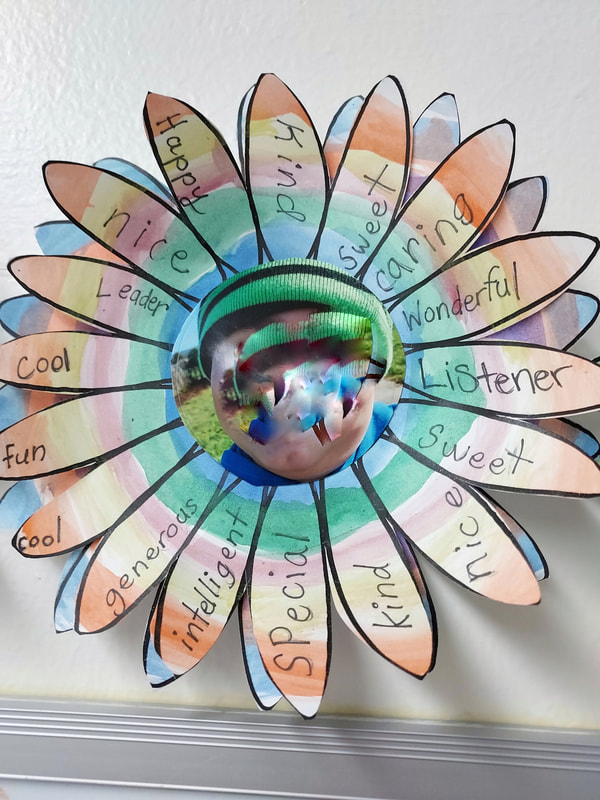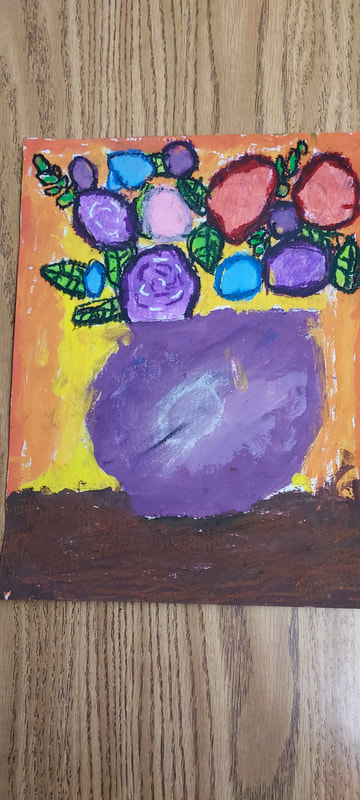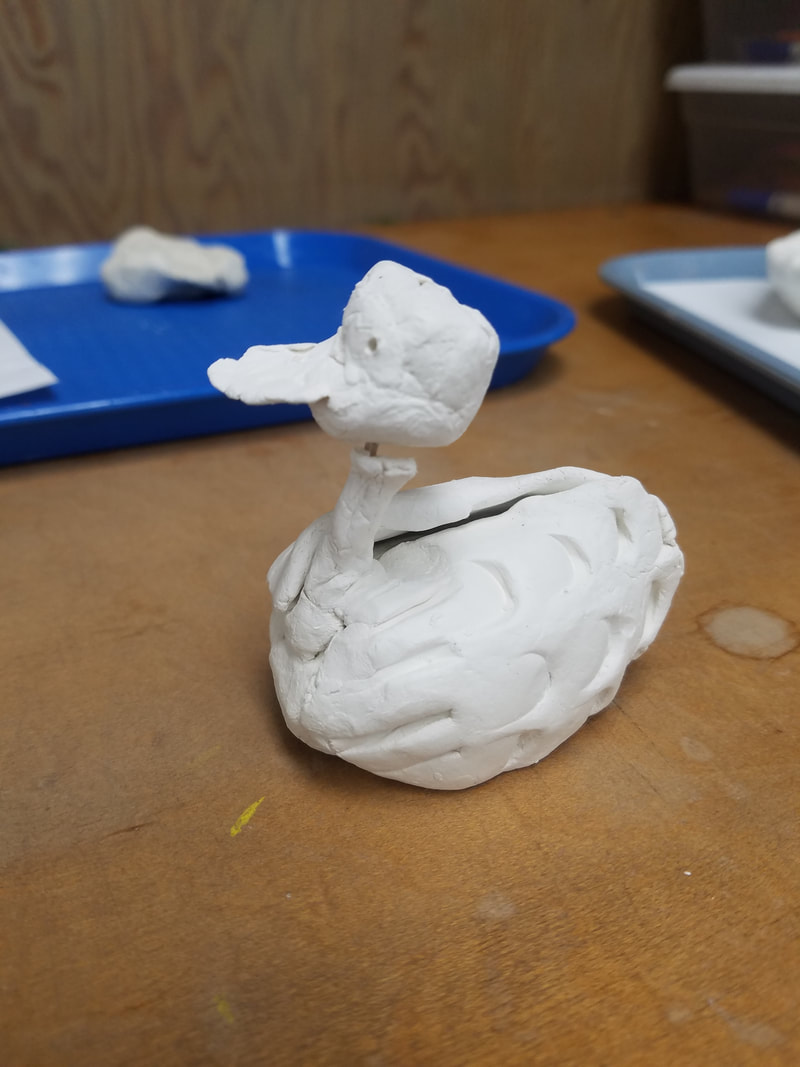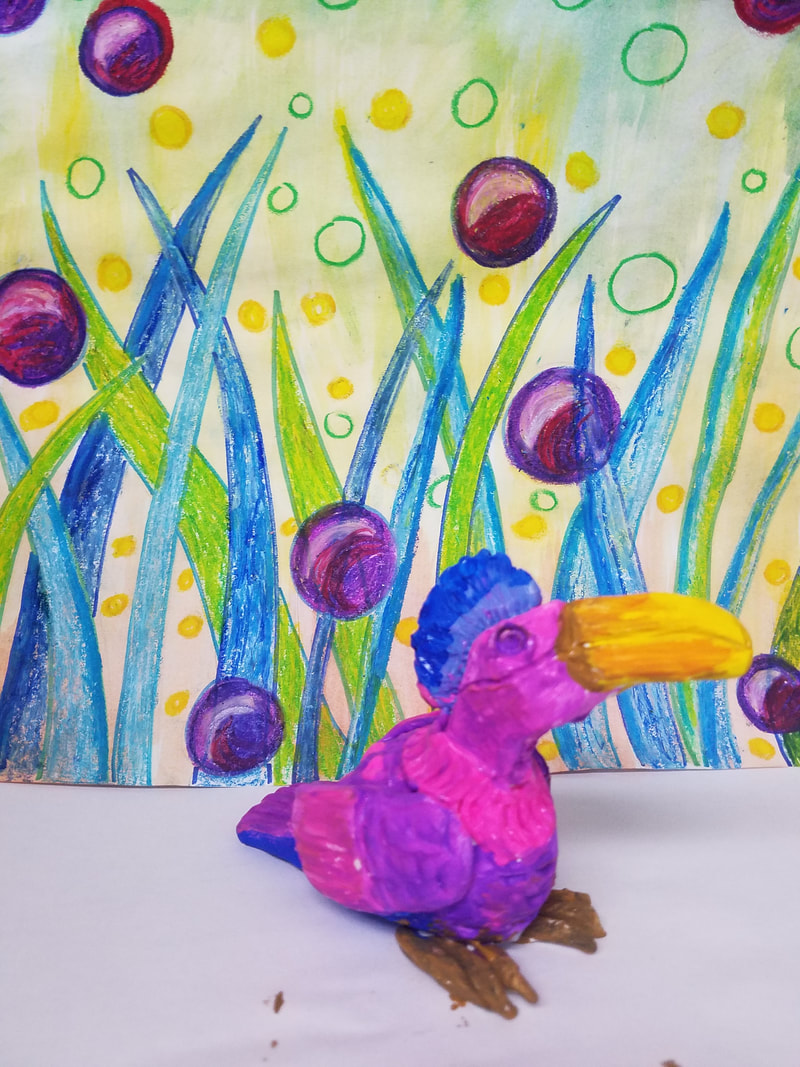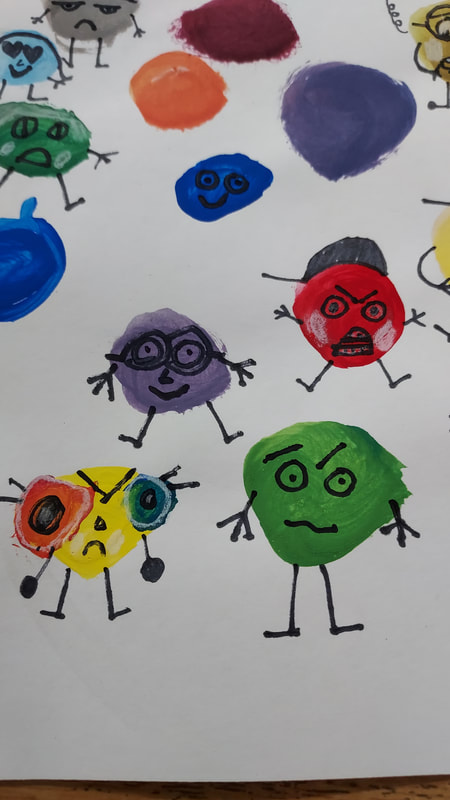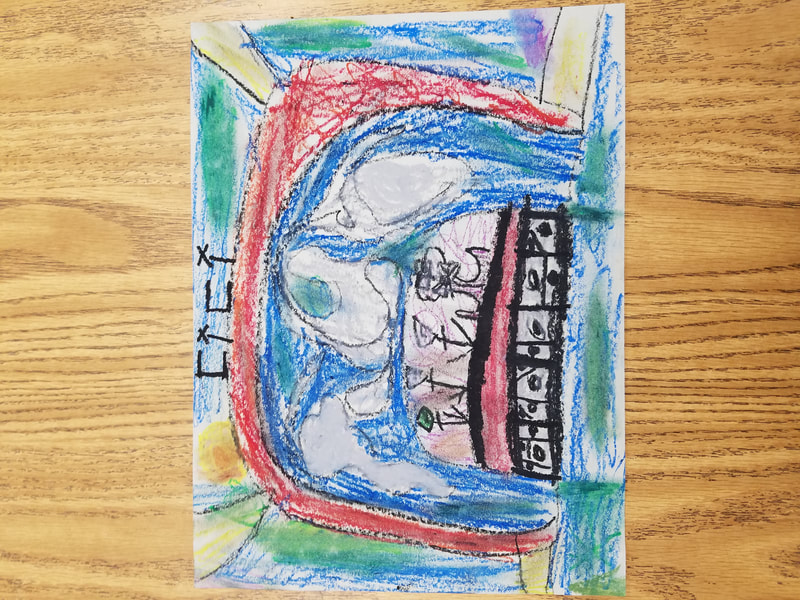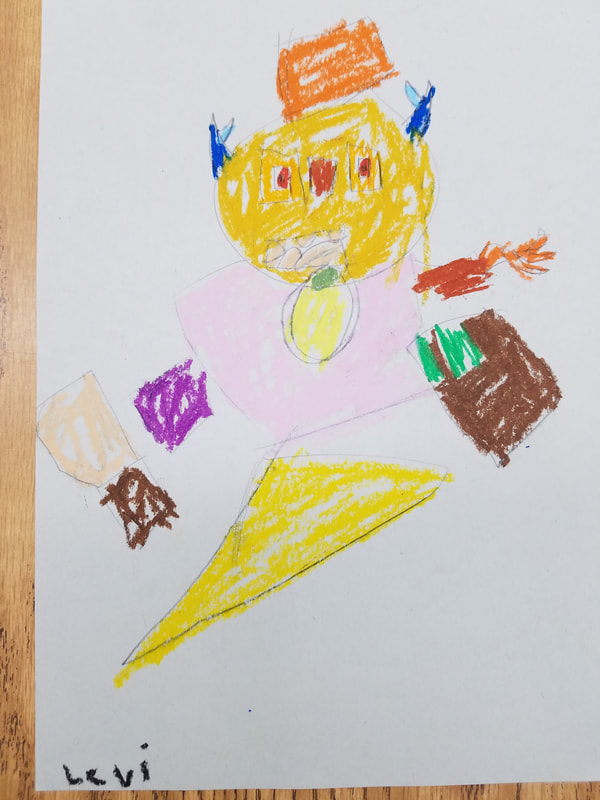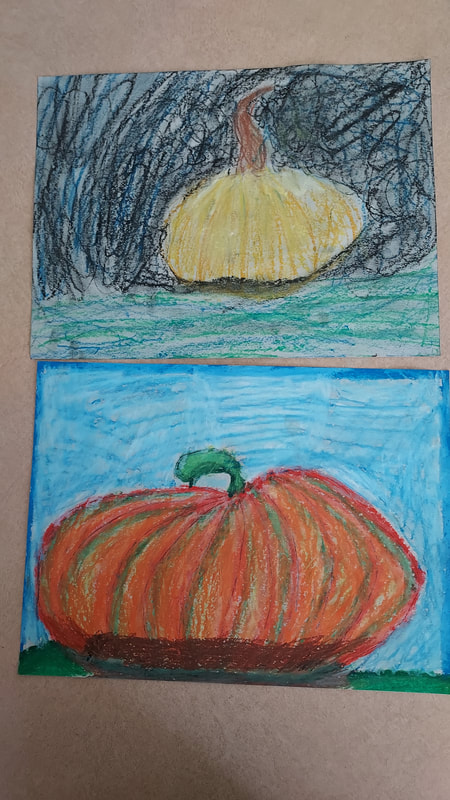Welcome to our classroom!
We have been exploring art in the garden by creating natural mandalas, learning about mixing secondary colors out of primary colors with the Mixed book and lesson, and drawing with Mr. J! Additionally, our third grade team created a Bird Adaptation science unit to teach animal survival .
We have been exploring art in the garden by creating natural mandalas, learning about mixing secondary colors out of primary colors with the Mixed book and lesson, and drawing with Mr. J! Additionally, our third grade team created a Bird Adaptation science unit to teach animal survival .
Paper Mache Local Birds-
A bird study at Arcata Marsh Wildlife Sanctuary
This project begins with students choosing a local bird from the Arcata Marsh, researching the bird, creating an Adobe Spark video report on the bird, a water color, a written report, and culminates in them creating life-size paper mache birds!
Water Color Bird Portrait and Local Bird Studies
Compliment Flowers! S.E.L./Back-to-School/Getting to Know You Project
This is a wonderful SEL lesson developed by my mentor, Guy Kuttner, back in the early 90's. First, brainstorm a list of adjectives that we can use to describe the qualities of our friends. Make a copy of this list for each student. Make a blank flower template on heavy card stock. I drew a flower that had enough petals that all 21 of my kids could write a word on everybody's flower. Have each student put their name in the center (to be covered with their picture later) and then have them take their compliments list, and walk around to each flower and fill in one petal on everyone else's flowers! After the flowers have been filled in, have them (or a teacher can) trace all the words carefully in sharpie. Finally, have them watercolor concentric rings of color over the whole flower. Later, cut out the flowers, glue a photo of each child's face into the center of the flower and display all year! Kids never tire of looking at their compliments.
This is a wonderful SEL lesson developed by my mentor, Guy Kuttner, back in the early 90's. First, brainstorm a list of adjectives that we can use to describe the qualities of our friends. Make a copy of this list for each student. Make a blank flower template on heavy card stock. I drew a flower that had enough petals that all 21 of my kids could write a word on everybody's flower. Have each student put their name in the center (to be covered with their picture later) and then have them take their compliments list, and walk around to each flower and fill in one petal on everyone else's flowers! After the flowers have been filled in, have them (or a teacher can) trace all the words carefully in sharpie. Finally, have them watercolor concentric rings of color over the whole flower. Later, cut out the flowers, glue a photo of each child's face into the center of the flower and display all year! Kids never tire of looking at their compliments.
For Mother's Day this year we did a painting of flowers using tempera and acrylic paint as the base, with oil pastel overlay. We focused on composition, shape, and complimentary colors!
|
After reading the art and text of “Mixed-A Colorful Story” by Arree Chung (book read here) students explore color mixing. They paint shapes of color on paper and, when dry, add facial expressions using white charcoal pencil and markers. They interpret color as a metaphorical character trait and create characters inspired by the paint colors they mixed. Class discussion and theatre integration are extensions.
|
Humboldt County pen and pastel maps
Heart Maps!
Perspective Collage Lesson
Begin by teaching about foreground and background, then talk about creating an interesting juxtaposition of subject matters with a foreground subject that somehow tells a new story when placed in the background. Using collage and careful cutting technique create a layered artwork using foreground and background. The final touch- try to create a title for the piece that explains something or piques the viewers interest!
Begin by teaching about foreground and background, then talk about creating an interesting juxtaposition of subject matters with a foreground subject that somehow tells a new story when placed in the background. Using collage and careful cutting technique create a layered artwork using foreground and background. The final touch- try to create a title for the piece that explains something or piques the viewers interest!



